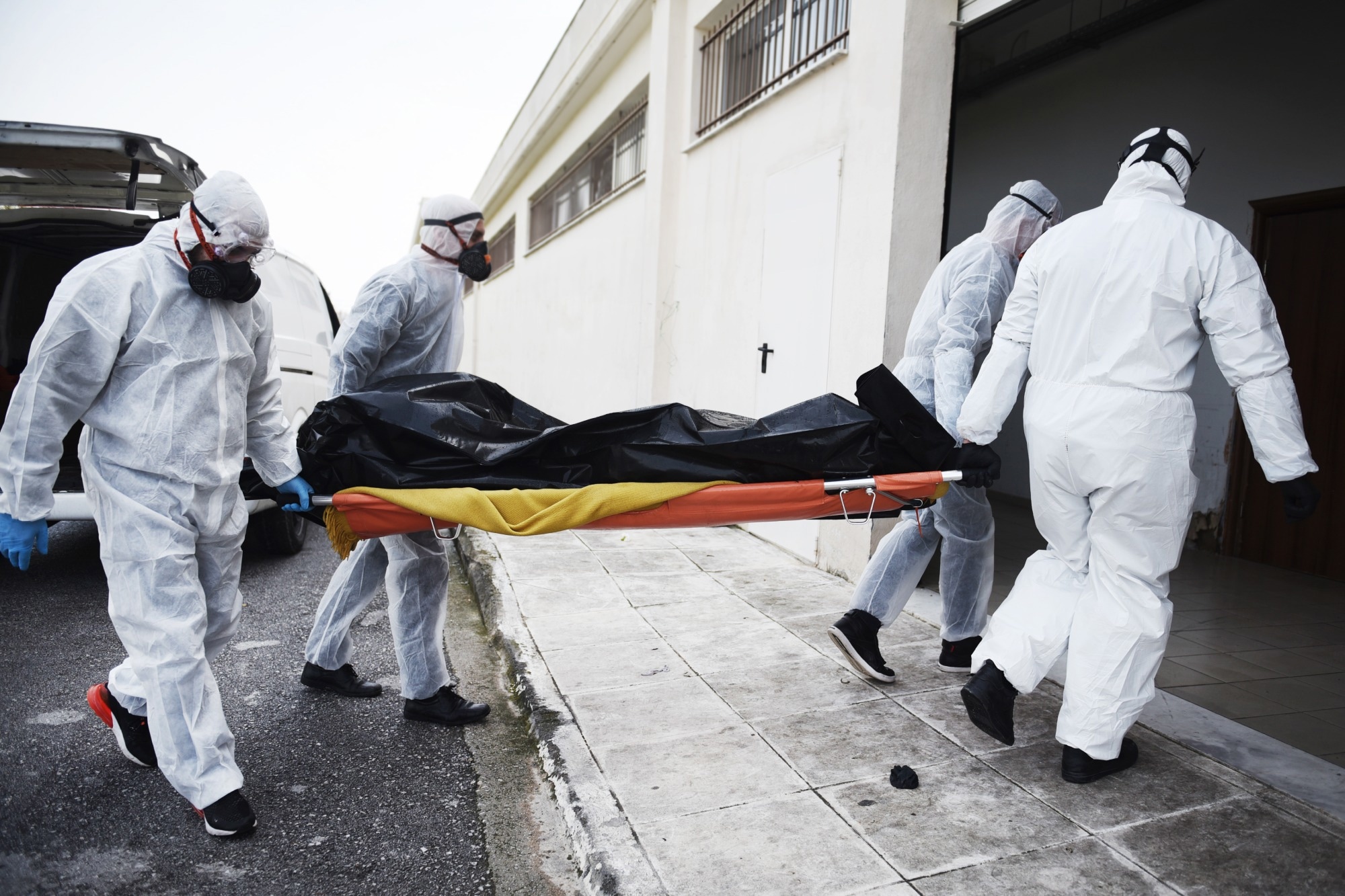In a recent study posted to the bioRxiv* preprint server, researchers determined whether severe acute respiratory syndrome coronavirus 2 (SARS-CoV-2) could be transmitted from a dead body.
 Study: Can SARS-CoV-2 transmit from a dead body? Image Credit: Giannis Papanikos/Shutterstock
Study: Can SARS-CoV-2 transmit from a dead body? Image Credit: Giannis Papanikos/Shutterstock

 *Important notice: bioRxiv publishes preliminary scientific reports that are not peer-reviewed and, therefore, should not be regarded as conclusive, guide clinical practice/health-related behavior, or treated as established information.
*Important notice: bioRxiv publishes preliminary scientific reports that are not peer-reviewed and, therefore, should not be regarded as conclusive, guide clinical practice/health-related behavior, or treated as established information.
In July 2020, the federal government of Japan established procedures related to the transportation and performance of the funeral and cremation of patients who succumbed to coronavirus disease 2019 (COVID-19). These guidelines underlined several strategies for the prevention and control of the infection. Several studies have reported the detection of SARS-CoV-2 in COVID-19 mortalities.
About the Study
In the present study, researchers investigated whether SARS-CoV-2 transmission is possible from dead bodies of COVID-19 patients.
The team tested SARS-CoV-2 transmissibility from the dead body of a COVID-19-infected hamster. Syrian hamsters aged six months were infected with SARS-CoV-2/UT-NCGM02/Human/2020 (Wuhan strain) and were euthanized 24 hours or 48 hours after infection. Organs were collected from dead bodies and euthanized-infected hamsters for virus titration.
Furthermore, transmissibility from the dead hamster body was verified by assessing eight additional groups of naive hamsters under cohousing conditions with a dead infected hamster 24 hours after infection.
The team also analyzed the efficacy of Angel-care in preventing SARS-CoV-2 transmission from a dead hamster. In human Angel-care, the nostrils and pharynx are stuffed with a gel before plugging with cotton, while the rectum is stuffed with cotton and fiber, and the ears are stuffed with cotton to prevent body fluid leakage. The researchers utilized the same moisture-absorbing gel in the hamster’s mouth and plugged it with cotton, medical grade Aron Alpha was used to plug the rectum and nostrils while the ears were left untreated. A total of 10 groups were considered, with each group comprising one Angel-cared COVID-19-infected hamster body and two naive hamsters.
Moreover, the team assessed the efficacy of embalming dead bodies in preventing viral transmission. This was achieved by injecting embalming agents via the apex of the heart of the dead body and draining the blood. One embalmed body with two naive hamsters constituted one group, and the team examined a total of 10 groups.
Results
The study results showed that the live-infected hamsters had high viral titers in the lungs and nasal turbinates. The SARS-CoV-2 transmission was noted among all live-infected hamsters under cohousing conditions at 24 and 48 hours after COVID-19 infection. High viral titers were consistent in the nasal turbinates and lungs of dead-infected hamsters 24 hours after euthanization. Furthermore, SARS-CoV-2 transmission was observed from one of the two hamster groups cohoused with the euthanized infected hamster, wherein the cohousing conditions began 24 hours after infection and not 48 hours.
The assessment of naive hamsters housed with the dead infected hamster showed that the dead body transmitted SARS-CoV-2 to two of the eight groups. Overall, three of the ten hamster groups showed virus transmission from the dead infected body to the naive hamsters. This indicated that a dead infected body could transmit SARS-CoV-2 in the early stage of infection.
The Angel-cared hamster bodies had high viral titers in the lungs and nasal turbinates. However, these bodies did not transmit SARS-CoV-2 to the naive hamsters. This indicated that Angel-care effectively prevented SARS-CoV-2 transmission from the infected dead bodies. On the other hand, the team could not assess the viral titers in the embalmed hamster bodies due to the toxicity caused by formaldehyde from the embalming agent to the cultured cells employed for viral titration.
However, no SARS-CoV-2 transmission was observed from the embalmed body to the naive hamsters. This suggested that embalming effectively blocked the transmission of SARS-CoV-2 from a dead body.
Conclusion
The study findings showed that SARS-CoV-2 could be effectively transmitted from a COVID-19-infected dead body, potentially via postmortem gases. However, Angel-care treatment and embalming were found to prevent viral transmission from the dead body. The researchers believe that protection from SARS-CoV-2 infection is crucial during the handling of COVID-19-infected corpses, and the infected corpses must be treated appropriately.

 *Important notice: bioRxiv publishes preliminary scientific reports that are not peer-reviewed and, therefore, should not be regarded as conclusive, guide clinical practice/health-related behavior, or treated as established information.
*Important notice: bioRxiv publishes preliminary scientific reports that are not peer-reviewed and, therefore, should not be regarded as conclusive, guide clinical practice/health-related behavior, or treated as established information.
Journal reference:
- Preliminary scientific report.
Kiyoko Iwatsuki-Horimoto, Hiroshi Ueki, Mutsumi Ito, Sayaka Nagasawa, Yuichiro Hirata, Kenichiro Hashizume, Kazuho Ushiwata, Hirotaro Iwase, Yohsuke Makino, Tetsuo Ushiku, Shinji Akitomi, Masaki Imai, Hisako Saitoh, Yoshihiro Kawaoka. (2022). Can SARS-CoV-2 transmit from a dead body? bioRxiv. doi: https://doi.org/10.1101/2022.08.29.505777 https://www.biorxiv.org/content/10.1101/2022.08.29.505777v1